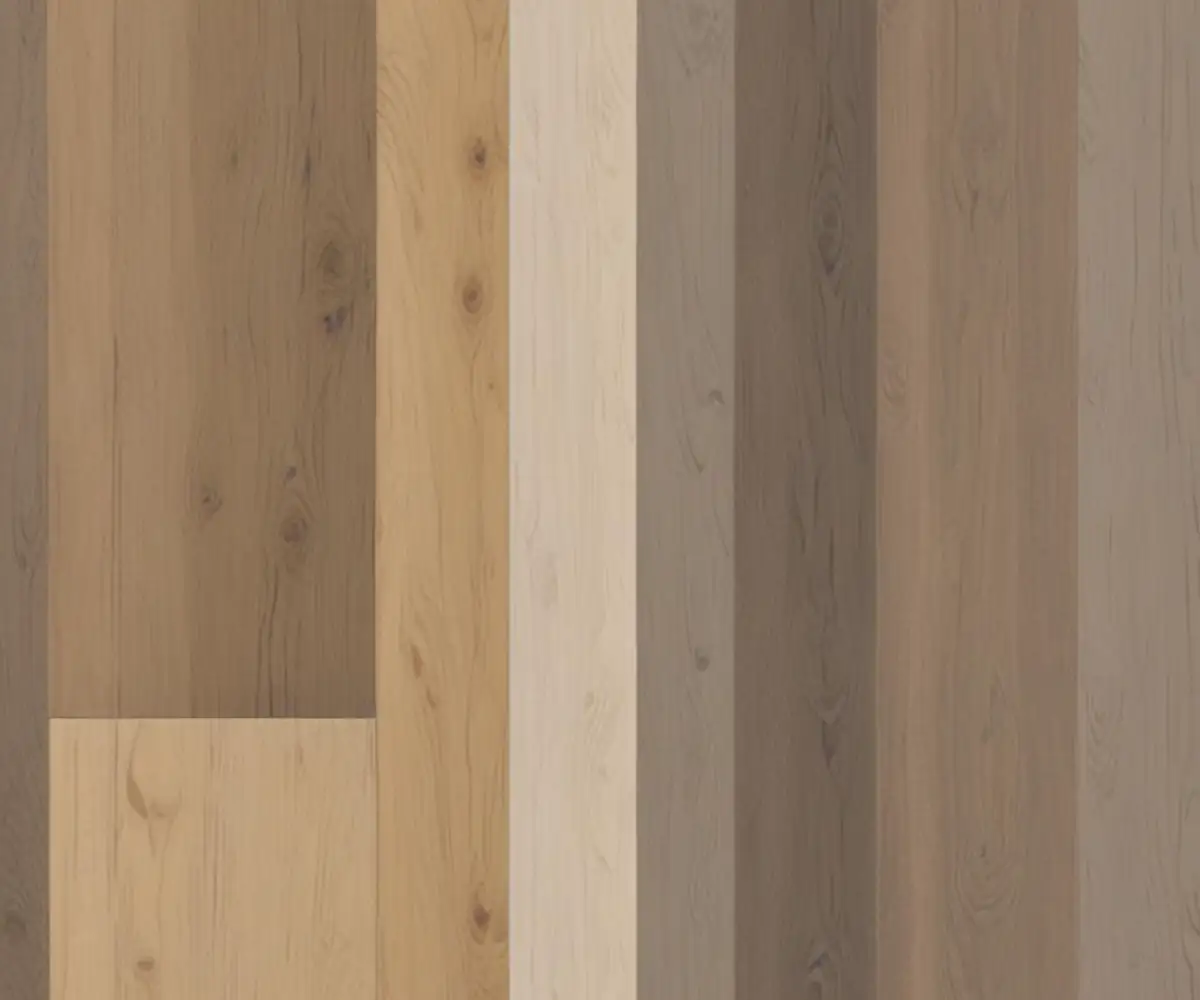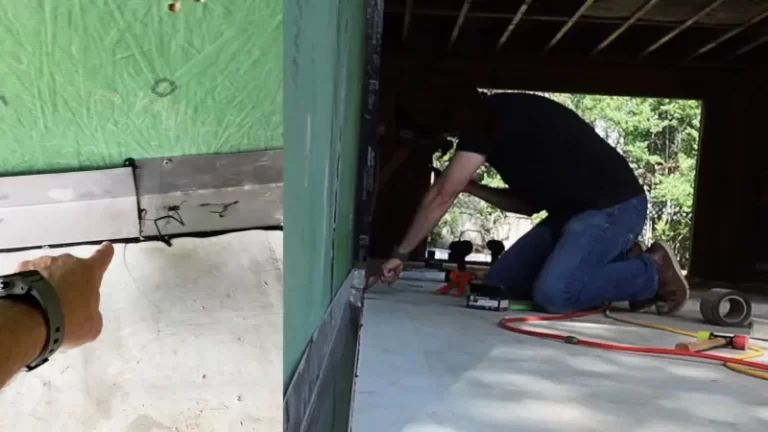Flooret vs Coretec LVP: Which Is the Ultimate Flooring for Your Home?
You’re standing at a crossroads in your home renovation journey, a decision that will literally form the foundation of your daily life. You’ve narrowed it down to two of the biggest names in luxury vinyl plank (LVP) flooring: Flooret and Coretec. The problem is, the more you research, the more confusing it gets.
One brand boasts an incredibly thick wear layer, while the other is praised for its comfort and massive selection. Making the wrong choice isn’t just a design mistake; it’s a costly, long-term headache you’ll be walking on for years. This is the ultimate showdown you’ve been waiting for—a detailed breakdown to help you finally choose the right LVP for your budget, your family, and your peace of mind.
You'll Learn About
Meet the Contenders: A Quick Introduction
Before diving into the nitty-gritty details, let’s get to know our two competitors. Both are titans in the flooring world, but they come from different corners of the market.
Flooret operates on a direct-to-consumer model, which means they cut out the retail middlemen to offer premium specs at a more competitive price. They are famous for their Modin collection, which features an exceptionally thick wear layer. Coretec, on the other hand, is a pioneer in the waterproof flooring space and is widely available through traditional flooring retailers. They are known for a vast selection of styles and a signature cork underlayment that enhances comfort.
Construction & Durability: The Core of the Matter
The single most important factor for many homeowners is durability. You want a floor that can stand up to kids, pets, dropped pans, and dragged furniture without showing battle scars. Here’s how Flooret and Coretec build their planks to withstand the chaos of daily life.
The All-Important Wear Layer
The wear layer is the transparent top coating that protects the floor’s printed design from scratches, scuffs, and stains. Its thickness is measured in mils (one-thousandth of an inch). This is where Flooret lands its heaviest punch.
Flooret’s premium Modin Signature line boasts a massive 40 mil wear layer, which is double the industry standard for commercial-grade flooring. Their more budget-friendly Base collection still offers a very respectable 20 mil wear layer. This extreme thickness is designed for superior scratch and dent resistance, making it an incredible option for high-traffic homes.
Coretec typically offers a 20 mil wear layer across most of its collections, with some lines going up to 30 mil. While 20 mil is perfectly suitable for most residential and even light commercial use, it simply doesn’t match the sheer thickness of Flooret’s top-tier offering. For households with large dogs or a lot of activity, that extra 20 mil from Flooret can provide significant peace of mind.

Core Differences: SPC vs. WPC
Beneath the wear layer lies the core, which provides the plank’s rigidity and waterproof properties. This is a key area where the two brands often differ. Flooret primarily uses a Stone Polymer Composite (SPC) core. SPC is made from a mixture of limestone and stabilizers, creating an incredibly dense, rigid, and impact-resistant plank. This makes it less susceptible to dents from heavy furniture or dropped objects.
Coretec is famous for its Wood Polymer Composite (WPC) core. WPC incorporates wood-like materials and a foaming agent, which results in a plank that is slightly softer and warmer underfoot. This composition also provides better sound insulation than SPC, making it a quieter floor to walk on. However, some users report that WPC can be more prone to dents compared to the stone-like hardness of an SPC core.
Design & Aesthetics: Finding Your Perfect Look
Durability is crucial, but you also have to love the way your floors look. Both brands offer highly realistic wood and stone visuals, but their approach to selection and style varies.
Coretec shines when it comes to variety. With hundreds of styles spread across numerous collections, they offer an enormous palette of colors, patterns, and plank sizes. Whether you want a rustic, reclaimed barn wood look or a sleek, modern tile design, Coretec likely has an option for you. This makes it easier to find a perfect match for your existing decor.
Flooret has a more curated selection, focusing on modern and popular wide-plank designs. Their Modin Signature collection features impressively large 9-inch by 72-inch planks that can make a room feel more open and luxurious. While their catalog isn’t as vast as Coretec’s, their styles are well-chosen and align with contemporary design trends. If you’re updating your home, you might also consider how new floors pair with other elements; for example, beautiful flooring can enhance the appearance of vinyl windows with wood trim, creating a cohesive and upscale look.
Comfort and Feel: What’s Underfoot?
The way a floor feels to walk on can be an overlooked but important detail. Here, the attached underlayment plays a huge role. Coretec’s signature feature is its attached cork underlayment. Cork is a natural sound dampener and provides a noticeable softness underfoot, which can reduce leg fatigue in areas where you stand a lot, like the kitchen.
Flooret uses a high-quality pre-attached IXPE foam underlayment. While it provides good sound insulation and comfort, many users find that Coretec’s cork backing feels slightly more forgiving and quieter. However, some users have reported that Flooret’s surface texture can feel abrasive on bare feet or cause socks to wear out, an issue less commonly reported with Coretec.
Side-by-Side Showdown: Flooret vs. Coretec
To make the decision easier, here is a direct comparison of the most important specifications and features.
| Feature | Flooret (Modin Signature) | Coretec (Typical Range) |
|---|---|---|
| Wear Layer | Up to 40 mil (Industry-leading) | 20 mil – 30 mil |
| Core Type | SPC (Stone Polymer Composite) – High Dent Resistance | WPC (Wood Polymer Composite) – Softer & Quieter |
| Attached Underlayment | IXPE Foam | Cork (Excellent Sound & Comfort) |
| Price Per Sq. Ft. | ~$3.00 – $6.00 (Direct-to-Consumer) | ~$2.50 – $12.00+ (Retail) |
| Plank Size | Known for large format planks (e.g., 9″ x 72″) | Wide variety of sizes available |
| Selection | Curated, modern styles | Vast selection of styles and colors |
| Residential Warranty | Lifetime | Lifetime |
Installation: A Warning for the DIYer
Both Flooret and Coretec utilize a floating click-lock installation system, making them accessible for ambitious DIYers. However, user reviews for both brands are filled with cautionary tales that all point to one critical factor: subfloor flatness. Neither product will perform correctly if installed over an uneven surface.
Failure to properly level your subfloor can lead to bouncing, a “crackling” noise when walked on, and eventual failure of the locking mechanisms, causing planks to separate. This is the single biggest mistake homeowners make. If you are considering installing floating vinyl plank flooring over OSB or concrete, you must ensure it meets the manufacturer’s strict flatness requirements—typically a variation of less than 3/16 of an inch over a 10-foot span.
Common Installation & Performance Problems
Coretec: Some users have reported issues with buckling or cupping, which is often tied to moisture from the subfloor or insufficient expansion gaps around the perimeter of the room. A few have also complained about a persistent “haze” on the floor that is difficult to clean.
Flooret: Besides the abrasive texture mentioned earlier, some customers have experienced issues with the top layer delaminating or seams peaking, though many of these cases can also be traced back to subfloor or moisture issues.
Price and Value: Which Offers More for Your Money?
Because Flooret sells directly to you, their pricing is very transparent and often lower for comparable specs. For around $4-$5 per square foot, you can get their top-of-the-line Modin Signature product with its 40 mil wear layer. This represents an incredible value proposition.
Coretec’s pricing is much more variable since it’s set by individual retailers. While you can find entry-level Coretec products for under $4 per square foot, their premium collections can easily climb to $8-$12 per square foot. The debate often comes down to this: would you rather have the best specs for the money (Flooret) or a wider selection and potentially softer feel for a higher price (Coretec)? For some homeowners, the choice between LVP and traditional flooring is also a major consideration. If you’re weighing your options, exploring a comparison like whether to refinish hardwood or install vinyl can provide valuable perspective on long-term value and aesthetics.
The Final Verdict: Who Should Buy Flooret and Who Should Buy Coretec?
There is no single “winner” in this showdown, because the right choice depends entirely on your priorities. We can, however, provide a clear recommendation based on different needs.
Choose Flooret If:
- Maximum durability is your #1 priority. If you have large dogs, active kids, or heavy foot traffic, the 40 mil wear layer on the Modin Signature line is nearly impossible to beat.
- You are on a tight budget but want premium specs. The direct-to-consumer model provides exceptional value, giving you commercial-grade durability for a mid-range price.
- You prefer a very rigid, dent-proof floor. The SPC core offers superior protection against dents from heavy objects.
Choose Coretec If:
- You want the widest possible selection of styles. If you have a specific color or pattern in mind, Coretec’s massive catalog gives you the best chance of finding it.
- Underfoot comfort and quietness are important to you. The WPC core combined with the cork underlayment generally provides a softer, quieter walking experience.
- You prefer to buy from a local retailer. If you value in-person service and want to see large samples at a local showroom, Coretec is the more accessible option.
Ultimately, both Flooret and Coretec are high-quality products that can create a beautiful and long-lasting foundation for your home. By weighing the factors of durability, design, comfort, and cost, you can now make an informed decision and move forward with your project confidently.

